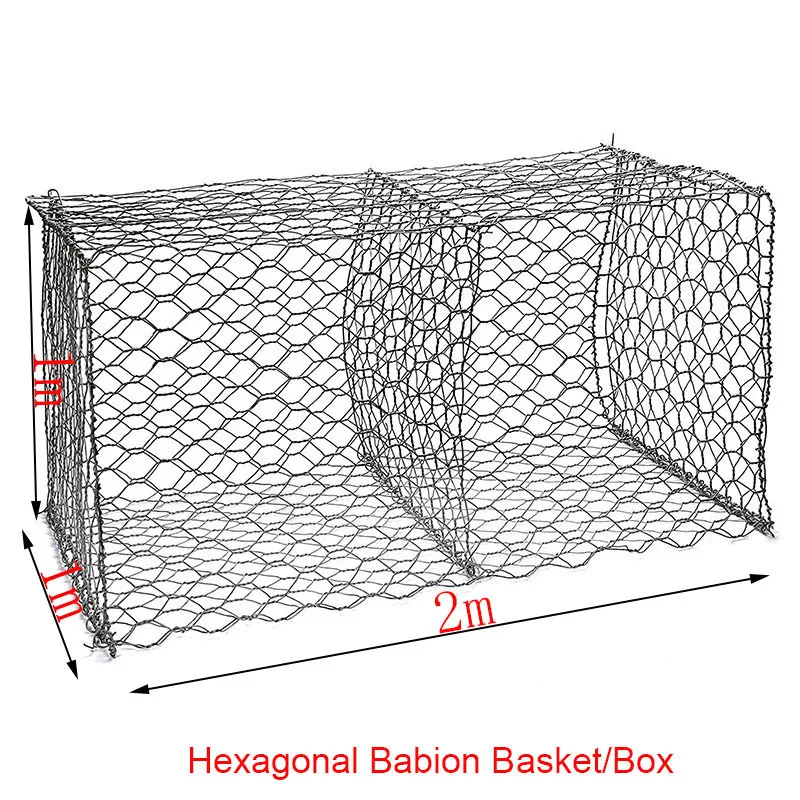
- Afrikaans
- Albanian
- Arabic
- Armenian
- Azerbaijani
- Basque
- Belarusian
- Bengali
- Bosnian
- Bulgarian
- Croatian
- Czech
- Danish
- Dutch
- English
- Esperanto
- Estonian
- Finnish
- French
- Galician
- Georgian
- German
- Greek
- hawaiian
- Hindi
- Hungarian
- Indonesian
- irish
- Italian
- Lao
- Latvian
- Lithuanian
- Luxembourgish
- Macedonian
- Maltese
- Myanmar
- Norwegian
- Polish
- Portuguese
- Romanian
- Russian
- Serbian
- Slovak
- Somali
- Spanish
- Swedish
- Thai
- Turkish
- Turkmen
- Vietnamese
Nov . 26, 2024 06:04 Back to list
Creative Uses of Gabions in Landscape Design and Outdoor Spaces
The Allure of Gabion Landscapes Harmony Between Nature and Architecture
When contemplating innovative and sustainable landscape design, few elements boast the versatility and aesthetic appeal of gabions. These wire mesh cages filled with stones or other materials have gained traction in landscaping, architecture, and civil engineering due to their distinct advantages. As we explore the significance of gabion landscapes, it becomes clear that they are not merely functional; they also enhance the visual and ecological harmony of outdoor spaces.
Understanding Gabions
Gabions originated from the Italian word gabbione, meaning big cage. Traditionally used for erosion control along riverbanks and roads, gabions have evolved into popular features in landscaping. Their structure generally consists of galvanised or PVC-coated wire mesh, filled with rocks, concrete, or other materials. This flexibility allows designers to create various shapes and sizes, making gabions suitable for walls, benches, planters, and more.
Aesthetic Appeal
One of the most significant advantages of gabions in landscape design is their aesthetic versatility. The natural texture and color of stones can transform a landscape into a visually appealing environment. Stone-filled gabions can mimic the look of traditional stone walls, offering a rustic charm in rural settings or a modern touch in urban landscapes. By choosing different types of stones—such as river stones, granite, or limestone—landscape architects can achieve unique looks that complement the surrounding flora and fauna.
Gabion cages can also serve as artistic installations, as designers can fill them with vibrant glass or mixed materials, turning a simple functional element into a focal point. This ability to blend functionality with artistic expression makes gabions a favorite among contemporary landscape designers.
Environmental Benefits
In addition to their visual appeal, gabions are also recognized for their environmental benefits. They are often used for erosion control and stabilization, especially in areas prone to landslides or soil erosion. By creating a strong and flexible barrier, gabions help protect the soil and prevent the loss of valuable topsoil.
gabion landscape

Furthermore, gabions promote biodiversity. When incorporated into a landscape, they can provide shelter and habitats for various wildlife, such as birds, insects, and small mammals. The spaces within the cages can also be enhanced with soil and vegetation, promoting plant growth that further supports local ecosystems.
Versatility and Usage
Gabions can be employed in numerous ways in landscape design. They can be used to create retaining walls, which not only provide structural integrity to slopes but can also be designed for seating or other outdoor functions. When integrated into terraces, gabion walls can prevent erosion while simultaneously offering an attractive solution for managing uneven terrain.
Additionally, gabions can be leveraged for functional landscaping features, such as fire pits, water features, or outdoor kitchens. Their robust nature makes them suitable for use in harsh weather conditions, while their drainage capabilities ensure that water flows freely, minimizing the risk of flooding in low-lying areas.
Maintenance and Longevity
Gabions are relatively low-maintenance compared to other landscaping materials. The materials used to fill the cages are durable and weather-resistant, meaning they require little upkeep over time. Regular inspections may be needed to ensure the integrity of the wire mesh and to replenish any stones that may have shifted.
Conclusion
Gabion landscapes represent a perfect synthesis of functionality, aesthetic appeal, and environmental benefits. As designers increasingly seek sustainable solutions that integrate well with nature, the use of gabions is likely to continue rising. Their adaptability makes them suitable for a wide range of applications, enhancing the beauty and resilience of the landscapes we inhabit.
In a world increasingly focused on sustainability, embracing gabion structures within landscape design is not just a trend; it is a commitment to creating harmonious spaces that respect and reflect the natural environment. Whether used in residential gardens, public parks, or commercial spaces, gabions remind us that beauty and practicality can coexist, crafting landscapes that are as timeless as they are modern.
-
Versatile Sheep and Livestock Hurdles for Sale
NewsApr.14,2025
-
The Rise of BRC Fencing
NewsApr.14,2025
-
High-Quality Cattle and Horse Panels for Sale
NewsApr.14,2025
-
Durable Cattle Fencing Solutions
NewsApr.14,2025
-
Double Wire Fencing Solutions
NewsApr.14,2025
-
360 Degree Protection with 358 Anti-Climb Fences
NewsApr.14,2025









